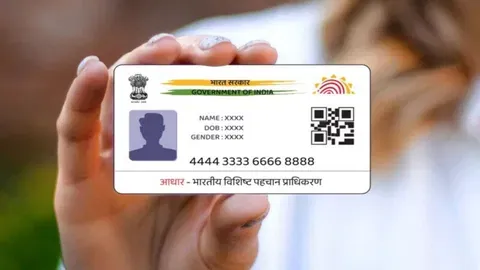What is the nature of India's current foreign policy problem, or at least predicament? Donald Trump's episodic statements and social media posts are attention-grabbing. His inner circle's pay-as-you-go diplomacy is alarming. The endless, but unavoidable, wait for tranche 1A of the bilateral trade deal is exasperating. Yet, tactical responses (or non-responses) to any or all of these should not detain us from a strategic re-appraisal.
The US' retrenchment from global commitments is creating gaps in three areas - the world's trade and economic system; security frameworks; and provision of international public goods. There is far from a total withdrawal, but the 800-pound gorilla is slimming down to a 700-pound gorilla. What's more, the fat is not being reduced evenly across sectors, regions and geographies. As such, there is the 'known unknown' of the quantum of decline - the notional 100 pounds - but also an 'unknown unknown' of the consistency of American retrenchment: the where, when and for how long.
No one nation, partnership or coalition can fill the gap America leaves. This is as true for consumer demand as it is for security architecture. To be sure, different groupings can address some of the gaps in different regions and domains. Read along with fitful, but still inexorable, US-China great power competition, this is leading to two parallel processes of hedging for countries such as India:
Tech & security: There's straightforward hedging between the US and China in the digital and strategic technology spheres, as well as security and security-adjacent domains. Here, the space for hedging is contracting.
India, like many others, is making its choices. These choices are systemic choices. They have a greater resilience and buy-in in US government agencies, and tech and business constituencies. They will advance with or without the White House's outright support. Sometimes they could even do so in spite of it. Of course, pace and visibility will be modulated.
US plus one: Then, a second process involves hedging between the US and like-minded, non-China partners. Here, the space for hedging is actually expanding. Actors such as India seek, if not alternatives, then at least complements and supplements to their export and trade, supply chains, defence and security, and tech relationships with the US. Skewed dependencies are sought to be mitigated to the degree possible. There are attempts to diversify.
India and Europe looking to do more together in trade, defence supply chains and innovation is one example. India-Australia cooperation in rare earths is another. Increasing partnerships involving non-US Quad countries, as well as non-Quad countries, in the Indo-Pacific is a third.
Having said that, in some domains, even a partial withdrawal of the US footprint is so substantial that no new arrangement can entirely fill it. Nevertheless, it is what it is. Volatility and unpredictability are now a way of life.
How, then, does India navigate the Trumpian age? Revisit the basics. In 1991 (liberalisation), 2000 (Y2K), 2014 (Modi mandate), or 2020-21 (post-Covid), excitement about India was rooted in its potential as a trade and tech partner, as a market for key countries, and as a possible sourcing and supply chains hub for many more. Everything else - cultural and civilisational wealth, democratic and transparency credentials - was, and remains, a useful add-on. Minus economic leverage, India is not a vishwa guru, or even a vishwa mitra; it is a vishwa also-ran.
In a time of tariffs and turbulence, with global trade rules being upended and the whole notion of most favoured nation being hollowed out, India once more needs to make its economy and trade attributes the headline of its external strategy. It is not enough to conclude free trade agreements - more accurately, feasible trade agreements - with, depending on who in the government is describing it, 'complementary economies', 'partners to our West' or 'rich countries'. The game is much more gritty, granular and painstaking.
India offering a meaningful trade relationship, an economic stake or a supply chain must-have to as many countries as possible is the hard, slow and relentless mechanism to building foreign policy leverage. In such a reckoning, they are simply no non-partners - no countries one can afford to ignore. There will be limitations to what India can do with China and Pakistan, but aside from that, India will need to strive to make itself indispensable to some economic imperative or the other with about every country.
This will include individual Asean countries, neighbouring countries - in some of which reckless application of Indian quality control orders (QCOs) has caused legitimate pushback - as well as problem countries such as Turkiye. In the end, what unique economic stake and proposition India offers another nation is the best metric of its foreign policy influence. An aggregation of such stakes and propositions will make for composite national relevance in a smash-and-grab world order.
Prime Minister Narendra Modi's two visits this week - to the UK to conclude a trade deal that, among other things, could give Scotch a market advantage over bourbon, and to the Maldives, where bloody-minded economic engagement has outlasted political acerbity - offer a glimpse of what could be. There'll still be about 200 countries to go.
The US' retrenchment from global commitments is creating gaps in three areas - the world's trade and economic system; security frameworks; and provision of international public goods. There is far from a total withdrawal, but the 800-pound gorilla is slimming down to a 700-pound gorilla. What's more, the fat is not being reduced evenly across sectors, regions and geographies. As such, there is the 'known unknown' of the quantum of decline - the notional 100 pounds - but also an 'unknown unknown' of the consistency of American retrenchment: the where, when and for how long.
No one nation, partnership or coalition can fill the gap America leaves. This is as true for consumer demand as it is for security architecture. To be sure, different groupings can address some of the gaps in different regions and domains. Read along with fitful, but still inexorable, US-China great power competition, this is leading to two parallel processes of hedging for countries such as India:
Tech & security: There's straightforward hedging between the US and China in the digital and strategic technology spheres, as well as security and security-adjacent domains. Here, the space for hedging is contracting.
India, like many others, is making its choices. These choices are systemic choices. They have a greater resilience and buy-in in US government agencies, and tech and business constituencies. They will advance with or without the White House's outright support. Sometimes they could even do so in spite of it. Of course, pace and visibility will be modulated.
US plus one: Then, a second process involves hedging between the US and like-minded, non-China partners. Here, the space for hedging is actually expanding. Actors such as India seek, if not alternatives, then at least complements and supplements to their export and trade, supply chains, defence and security, and tech relationships with the US. Skewed dependencies are sought to be mitigated to the degree possible. There are attempts to diversify.
India and Europe looking to do more together in trade, defence supply chains and innovation is one example. India-Australia cooperation in rare earths is another. Increasing partnerships involving non-US Quad countries, as well as non-Quad countries, in the Indo-Pacific is a third.
Having said that, in some domains, even a partial withdrawal of the US footprint is so substantial that no new arrangement can entirely fill it. Nevertheless, it is what it is. Volatility and unpredictability are now a way of life.
How, then, does India navigate the Trumpian age? Revisit the basics. In 1991 (liberalisation), 2000 (Y2K), 2014 (Modi mandate), or 2020-21 (post-Covid), excitement about India was rooted in its potential as a trade and tech partner, as a market for key countries, and as a possible sourcing and supply chains hub for many more. Everything else - cultural and civilisational wealth, democratic and transparency credentials - was, and remains, a useful add-on. Minus economic leverage, India is not a vishwa guru, or even a vishwa mitra; it is a vishwa also-ran.
In a time of tariffs and turbulence, with global trade rules being upended and the whole notion of most favoured nation being hollowed out, India once more needs to make its economy and trade attributes the headline of its external strategy. It is not enough to conclude free trade agreements - more accurately, feasible trade agreements - with, depending on who in the government is describing it, 'complementary economies', 'partners to our West' or 'rich countries'. The game is much more gritty, granular and painstaking.
India offering a meaningful trade relationship, an economic stake or a supply chain must-have to as many countries as possible is the hard, slow and relentless mechanism to building foreign policy leverage. In such a reckoning, they are simply no non-partners - no countries one can afford to ignore. There will be limitations to what India can do with China and Pakistan, but aside from that, India will need to strive to make itself indispensable to some economic imperative or the other with about every country.
This will include individual Asean countries, neighbouring countries - in some of which reckless application of Indian quality control orders (QCOs) has caused legitimate pushback - as well as problem countries such as Turkiye. In the end, what unique economic stake and proposition India offers another nation is the best metric of its foreign policy influence. An aggregation of such stakes and propositions will make for composite national relevance in a smash-and-grab world order.
Prime Minister Narendra Modi's two visits this week - to the UK to conclude a trade deal that, among other things, could give Scotch a market advantage over bourbon, and to the Maldives, where bloody-minded economic engagement has outlasted political acerbity - offer a glimpse of what could be. There'll still be about 200 countries to go.
(Disclaimer: The opinions expressed in this column are that of the writer. The facts and opinions expressed here do not reflect the views of www.economictimes.com.)









Ashok Malik
The author is partner, The Asia Group, and chair of its India practice